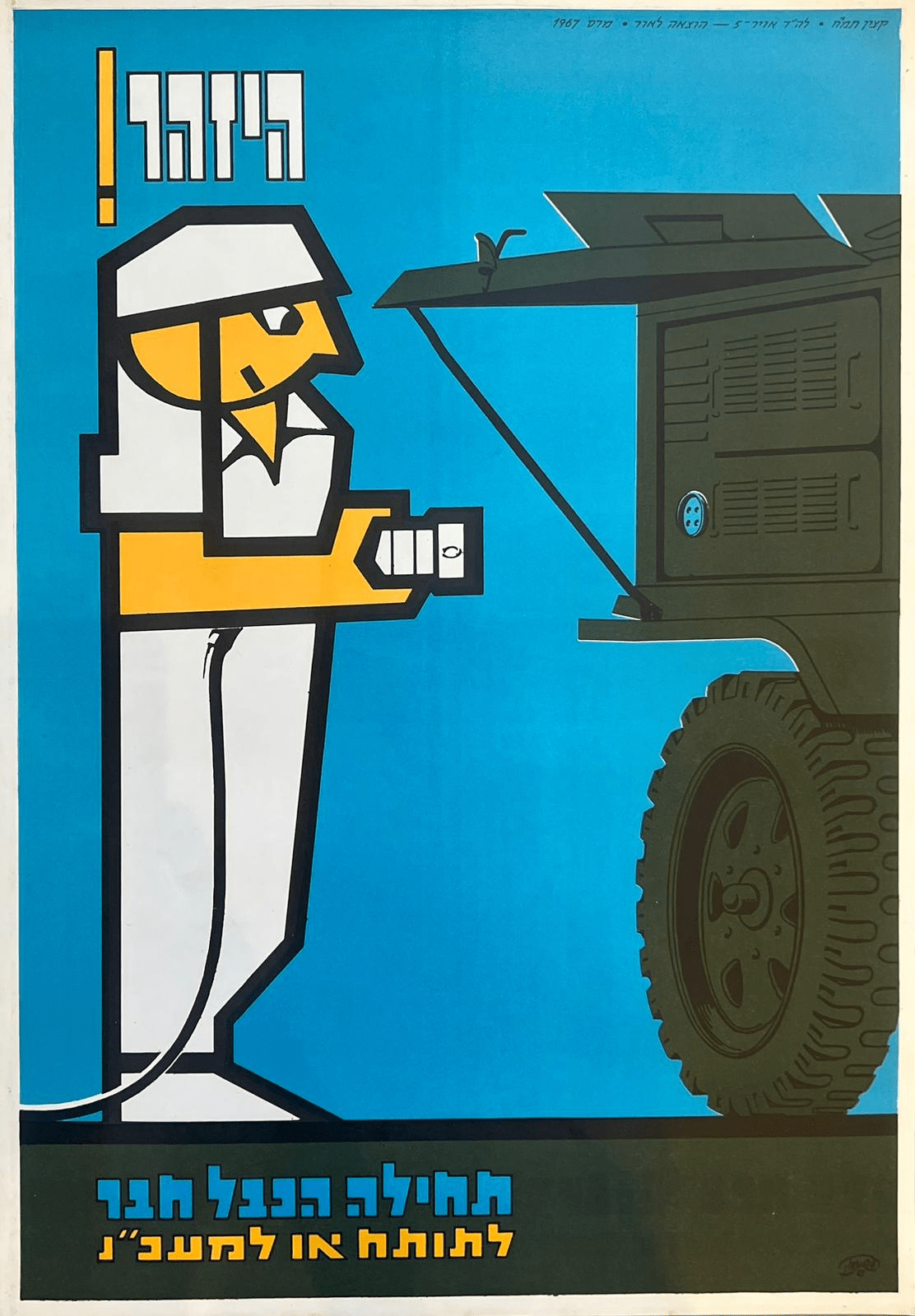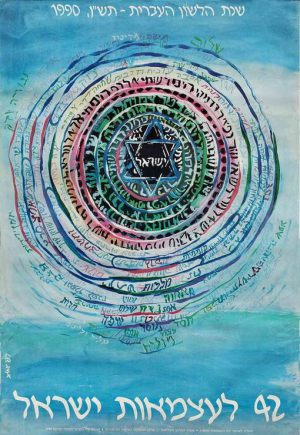Shop
Israeli Airforce Vintage Poster “Beware of Mistakes” Israel Six Day War 1967
Original price was: $780.00.$620.00Current price is: $620.00.
1 in stock
| Artist / Creator | |
|---|---|
| Size | |
| Year | |
| Technique | |
| Condition | |
| A |
Description
Israeli Airforce vintage poster “Beware of mistakes! Identify him for sure” 1967
Beware of mistakes, identify them in advance Pilot training poster in a pilot course
Air Force Poster, 1967 Illustrated by Shimon Ori, Air Force graphic artist from 1959-1975.
פוסטר הדרכה קורס טייס 1964
כרזה של חיל אויר, 1967 אויירה ביד שמעון עורי, גרפיקאי מחיל האויר בין השנים 1959-1975. “היזהר מטעות! זהה אותו בוודאות”
Israeli Air force
A Humble Beginning
The Israeli Air Force was established during the 1948 Arab-Israeli War, as a successor to the “Sherut Avir”, which served as the aerial branch for the Haganah (later to become Israeli Defence Force).
At the time of its establishment, the IAF consisted of a small number of troops and aircraft, with recruits and aircraft joining the air force from around the world, bringing valuable skills, aircraft and equipment along with them.
The IAF performed its first sortie on May 29th 1948, and helped bring an Egyptian advance near Ashdod to a halt using four Czechoslovakian Messerschmitt planes. During the war, the IAF intercepted enemy aircraft, provided the ground forces with air support and flew attack sorties to Cairo, Damascus and Amman.
With the war’s culmination, most of the foreign volunteers were released from military service, and the IAF was made up of Israeli pilots only. The air force began establishing AFBs, conceiving combat doctrines and establishing professional squadrons to integrate new aircraft.
The 50s: The Jet Era and Operation “Kadesh”
The IAF underwent a complete re-organization in the 50s, with the development of new control systems, and the increase in aerial reconnaissance missions. In 1953, the Air Force entered the “Jet Era” when the British “Meteor” aircraft joined the force.
In 1956, the IAF performed multiple roles in Operation “Kadesh” (The Israeli operation in the Sinai Peninsula); dropping paratroopers over Sinai, destroying Egyptian communication lines, performing rescue missions and providing air support.
The 60s: Operation “Moked” and the War of Attrition
The IAF continued integrating new aircraft throughout the 60s, and its combat doctrines were put to a test in a long series of battles against Egypt, Syria and Jordan. During Operation “Moked”, the IAF destroyed the grounded Egyptian Air Force, and severely damaged the air forces of Jordan, Syria and Iraq.
The IAF fought on all fronts during the War of Attrition, including aerial combat, bombing runs and joint operations with the ground forces in Egypt and Jordan. During that time, the IAF continued to integrate better and more sophisticated aircraft, and in the early 1970s, began integrating UAVs for the first time.
The 70s: The Yom Kippur War, and Operation “Thunderball”
The IAF’s most substantial challenge was the Yom Kippur War in 1973. Right from the beginning of the war, the IAF’s aircraft assisted in the efforts to halt Egyptian and Syrian advances, engaged in aerial combat, attacked enemy ground forces, bombed enemy airports and attacked strategic targets. The greatest threat to the IAF was the Ground-Air missile array at both fronts, in charge of the inerception of numerous Israeli fighter jets. Great efforts were made to properly implement the strategic lessons learned by this war, and prepare for the next ones to come.
In July 1976, Operation “Entebbe” led to the safe return of Israeli hostages from a plane hijacked in Athens and flown to Uganda. Hercules aircraft transported the forces and their equipment to Uganda, and then returned to Israel with the hostages. In 1978, IAF aircraft provided air support in operation “Litani”.
The 80s: The First Lebanon War
In June,1981, IAF jets destroyed the nuclear reactor in Iraq. A year later, the force attacked ground targets and engaged in aerial battles, shooting down around 100 Syrian planes. In operation “Artzav 19”, Israeli fighter jets destroyed the Syrian Anti-Aircraft batteries in Lebanon.
In the 1980s, the IAF assisted the mass repatriation of Ethiopian Jews to Israel. In October of 1985, the IAF attacked the P.L.O. (Palestine Liberation Organization) command center in Tunisia as part of operation “Wooden Leg”.
The 90s: The Gulf War and Operation “Shlomo”
The Gulf War broke out in January of 1991. IAF aircraft patrolled the Israeli skies, and a Patriot SAM System was established to protect Israel from Scud missiles. The largest airlift in Israel’s history brought 14,000 Ethiopian Jews to Israel.
The struggle between the IAF and the insurgents continued in the country’s northern border, and brought to two major operations: Operation “Accountability” in July of 1993, and Operation “The Grapes of Wrath” in April of 1996. On February 4th, 1997, the fighting in Lebanon took a heavy toll on the IAF – two “Yas’ur” helicopters collided, and 73 servicemen on their way to Lebanon were killed.
The 00s: The Second Lebanon War, and Operation “Cast Lead”
In the first years of the 21st century, the IAF was heavily involved in various operations in Judea and Samaria area and in Gaza, destroying terrorist targets and performing intelligence missions.
During the Second Lebanon War in the summer of 2006, the IAF destroyed launch pads, terrorist infrastructures, provided air support to the ground forces, evacuated casualties, gathered intelligence and transported forces deep into Lebanon territory.
Operation “Cast Lead” commenced in December of 2008 with an aerial attack on “Hamas” infrastructure situated in the Gaza strip. Throughout the operation, the IAF provided ongoing air support to the ground forces, gathered intelligence and extracted casualties.
Looking Ahead
The IAF continues to develop in all fields with the inclusion of new UAV squadrons and the integration of new aircraft. The IAF’s long arm has now reached into space, with the launch of the “Ofek 9” satellite in 2010, which joined two other “Ofek” satellites already in space. Using these satellites, the IAF can accurately locate targets from afar with precision.






